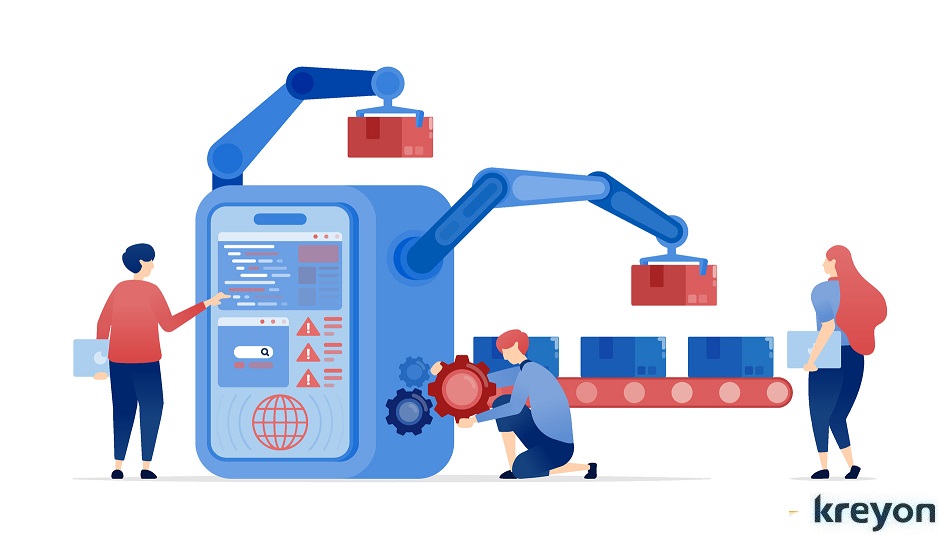Choosing the Right Tech Stack to Build Your Product: A Comprehensive Guide

Building a product requires more than just an idea—it demands the right combination of technologies to bring it to life. Choosing the right tech stack will determine the efficiency, scalability, flexibility, and maintenance of the product, so it’s important to make an informed choice.
Building a successful product starts with a solid foundation, and that foundation is your tech stack. Choosing the right combination of technologies can be the difference between a scalable, performant application and a buggy, unmaintainable mess.
This comprehensive guide dives deep into the factors you need to consider when choosing the right tech stack for your product, ensuring you make informed decisions that set you up for long-term success.
Here we explore what a tech stack is, why choosing the right one is crucial, the factors to consider during selection, and a few popular tech stacks used in modern web and mobile development.
What is a Tech Stack?
A tech stack is the combination of programming languages, frameworks, databases, libraries, and tools used to build a product.
It is the backbone of the application, allowing it to function as expected, whether it’s a website, mobile app, or enterprise software.
Why Choosing the Right Tech Stack is Important?
Selecting the right tech stack can determine the success or failure of your product. The right combination of technologies can lead to faster development, easier scalability, and a more enjoyable user experience.
Conversely, choosing an unsuitable tech stack may result in high development costs, slow performance, and difficulties with future updates.
Here are a few key reasons why choosing the right tech stack is so important:
Performance and Scalability: Your tech stack determines how well your product performs, especially as the user base grows. A stack that supports scaling ensures that the application will remain responsive even under heavy traffic.
Cost-Effectiveness: Different technologies come with varying levels of complexity, which directly impacts development costs.
Some stacks require specialized developers, while others can be managed by general developers. It is essential to align your stack with the budget available.
Developer Expertise and Availability: Not all technologies are widely understood or easily implemented. Some stacks might require specialized skills, meaning it may be harder to find developers with the necessary experience.
Maintenance and Long-Term Support: Technology stacks evolve, and keeping a product up-to-date requires ongoing maintenance. Choosing a widely-used tech stack ensures that you have access to community support and documentation, making maintenance easier.
Time-to-Market: A tech stack that aligns well with your team’s expertise and the product requirements can drastically reduce development time, leading to a faster time-to-market.
Security: Choosing a tech stack with robust security features can protect your product from potential cyber threats. Some technologies have better built-in security mechanisms than others.
Key Factors to Consider When Choosing a Tech Stack

Product Requirements Start by understanding the specific needs of your product. For instance, is it a highly dynamic web application, a data-driven mobile app, or a content-heavy platform?
The product type will determine whether you need more front-end-heavy technologies (e.g., JavaScript frameworks like React) or more robust back-end solutions (e.g., Node.js, Python).
Factors to Consider When Choosing Your Tech Stack

Choosing the right tech stack isn’t a one-size-fits-all approach. Here are the key factors you should consider:
Project Requirements: The specific needs of your product are paramount. Consider the type of application (web, mobile, desktop), its intended functionality, expected user base, and data storage requirements.
A simple web application might not need the same complex infrastructure as a high-traffic e-commerce platform.
Scalability Needs: How much do you anticipate your product growing? If you expect rapid growth, you need a tech stack that can easily scale to handle increased traffic and data.
Consider technologies that support horizontal scaling, allowing you to add more servers as needed.
Performance Requirements: How important is speed and responsiveness for your product? Certain technologies are optimized for performance, while others might be better suited for different tasks. Consider factors like latency, throughput, and resource utilization.
Security Considerations: Security should be a top priority. Choose technologies with robust security features and consider implementing security best practices throughout the development process. Think about data encryption, authentication, and authorization mechanisms.
Development Team Expertise: Your team’s skills and experience play a crucial role. Choosing technologies that your team is already familiar with can significantly speed up development and reduce the learning curve. However, don’t be afraid to explore new technologies if they are a better fit for your project in the long run.
Budget Constraints: Different technologies have different costs associated with them. Consider licensing fees, infrastructure costs, and development expenses. Open-source technologies can often be a cost-effective option, but they might require more development effort.
Time to Market: If you need to launch your product quickly, you might want to choose technologies that allow for rapid prototyping and development. Frameworks like Ruby on Rails or Node.js can be helpful in this regard.
Maintainability and Long-Term Support: Consider the long-term maintainability of your application. Choose technologies that are well-documented, have active communities, and are likely to be supported in the future. Avoid using outdated or niche technologies that might be difficult to maintain in the long run.
Community Support: A strong community around a technology can be invaluable. It provides access to resources, documentation, and support when you encounter issues. Active communities often contribute to the development and improvement of the technology.
Technology Maturity: Consider the maturity of the technology. Established technologies are often more stable and reliable, while newer technologies might offer innovative features but could also be more prone to bugs and instability.
Integration: Consider how your tech stack will integrate with existing systems, third-party services, or APIs. Whether your product needs payment processing, communication tools, or data analysis, ensure that your stack can easily integrate with external services.
Choosing the Right Components of Your Tech Stack

A typical tech stack can be broken down into several key components:
Front-End (Client-Side): This is what users interact with directly. Common front-end technologies include HTML, CSS, JavaScript, and frameworks like React, Angular, and Vue.js. Consider user experience, responsiveness, and browser compatibility when choosing your front-end stack.
Back-End (Server-Side): This handles the logic and data processing behind the scenes. Popular back-end technologies include Node.js, Python (with frameworks like Django and Flask), Ruby on Rails, Java, and PHP. Consider performance, scalability, and security when choosing your back-end stack.
Database: This is where your application’s data is stored. Common database options include relational databases like MySQL, PostgreSQL, and SQL Server, as well as NoSQL databases like MongoDB and Cassandra. Consider data structure, scalability, and performance requirements when choosing a database.
Server: This hosts your application and serves it to users. Common server options include cloud platforms like AWS, Google Cloud, and Azure, as well as traditional web servers like Apache and Nginx. Consider scalability, reliability, and cost when choosing a server.
DevOps Tools: These tools help automate the development, deployment, and maintenance of your application. Examples include Git for version control, Docker for containerization, and Kubernetes for orchestration. Consider streamlining your development workflow and improving efficiency when choosing DevOps tools.
Popular Tech Stacks
Let’s look at some commonly used tech stacks in modern web and mobile development.
| Tech Stack Name | Components | Pros | Cons | Best For |
| MEAN (or MERN) | MongoDB, Express.js, AngularJS (or React), Node.js | Fast development, JavaScript throughout, large community, cost-effective (open-source), scalable. | Can be challenging for beginners, AngularJS can be complex, potential performance issues with MongoDB. | Single-page applications (SPAs), dynamic web apps, real-time applications, e-commerce platforms. |
| LAMP | Linux, Apache, MySQL, PHP | Mature and well-established, large ommunity, abundant resources, cost-effective (open-source). | Can be slower than other stacks, PHP can be inconsistent, security vulnerabilities if not properly managed. | Simple to complex web applications, content management systems (CMS) like WordPress. |
| Ruby on Rails (RoR) | Ruby, Rails framework, PostgreSQL (often) | Rapid development, convention over configuration, clean code, strong community, great for prototyping. | Can be slower than other stacks, less flexible than some, steeper learning curve for advanced features. | Web applications with complex logic, e-commerce platforms, social networking sites. |
| Python/Django (or Flask) | Python, Django (or Flask) framework, PostgreSQL | Versatile and powerful, excellent for data science and machine learning, robust security features. | Django can be overkill for smaller projects, Flask requires more manual setup. | Web applications of all sizes, data-driven applications, APIs, scientific computing. |
| .NET (C#) | C#, .NET framework, SQL Server | Robust and scalable, excellent for enterprise-level applications, strong support from Microsoft. | Can be expensive (licensing costs), vendor lock-in potential, less flexible than open-source options. | Enterprise-level web applications, Windows-based applications, large-scale systems. |
| Java Spring | Java, Spring framework, MySQL (or other) | Highly scalable and performant, mature and stable, large community, excellent for complex applications. | Can be complex to set up and configure, steeper learning curve. | Enterprise-level applications, complex web applications, microservices architecture. |
| Node.js/React | Node.js, React, (often Express.js for backend) | Fast and performant, excellent for real-time applications, large and active community, great for SPAs. | JavaScript throughout the stack can be a double-edged sword, React can have a steep learning curve. | Single-page applications (SPAs), real-time applications, high-performance web applications. |
| Serverless (e.g., AWS Lambda, Google Cloud Functions) | Various (often Node.js, Python, Java) | Scalable and cost-effective (pay-as-you-go), reduced server management, fast deployment. | Vendor lock-in potential, debugging can be challenging, less control over infrastructure. | Event-driven applications, APIs, background tasks, microservices. |
Conclusion
Choosing the right tech stack is a critical decision when building your product. The right combination of tools, frameworks, and technologies can lead to better performance, easier maintenance, faster development cycles, and cost savings in the long run.
By thoroughly considering your product requirements, team skills, and scalability needs, you can select the perfect stack for your product’s success. Take your time, and don’t be afraid to experiment and refine your choices as your project evolves.
Kreyon Systems is a trusted product development partner for enterprise clients from concept to launch. Building innovative solutions that drive your business forward.
